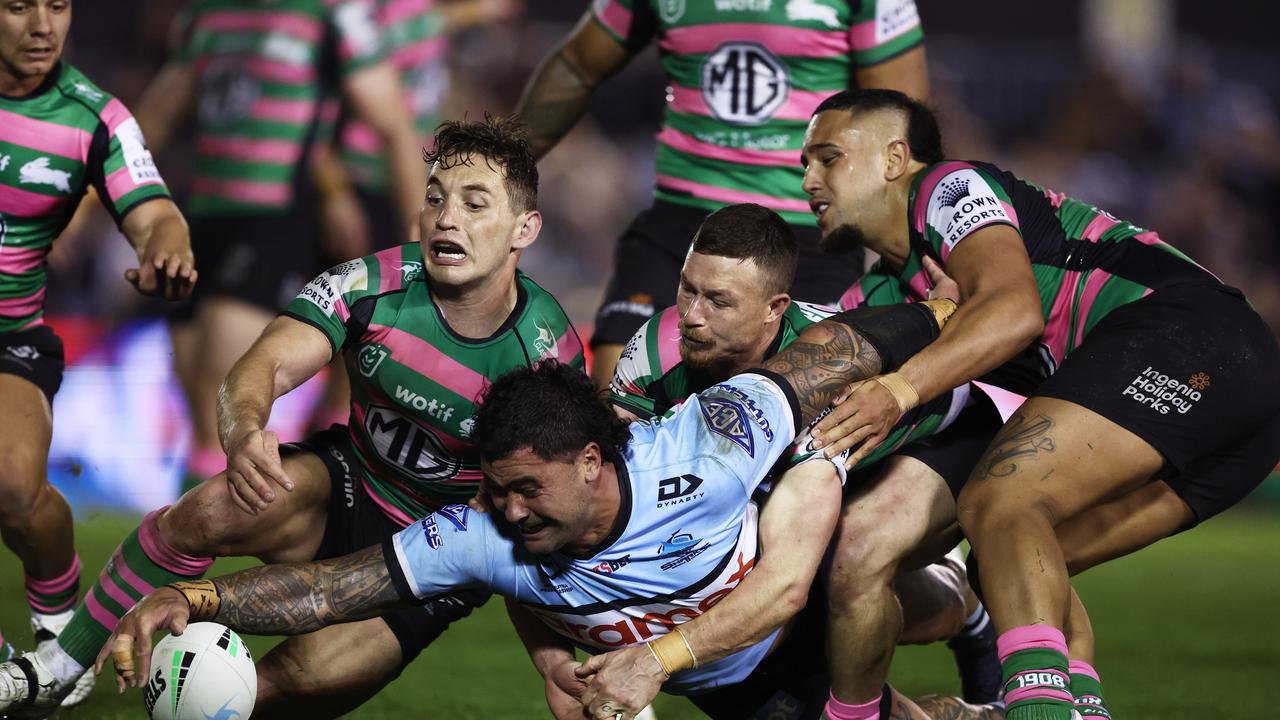Sharon Shillingsworth and Deidre Bolt are sisters in their 50s but have only just met for the first time.
WARNING: This story contains details of an Aboriginal person who has died and has been used with the permission of family.
Their separation was influenced by intergenerational trauma which stemmed from their father’s experiences as a child of the Stolen Generations.
It took the women years to track each other down, and while they had been connecting over the phone, a face-to-face meeting had eluded them until now.
It was a pivotal moment for both women; Ms Shillingsworth said she held her sister de ella for what she felt like “the longest time”.
Their father, John Carroll, was one of up to 600 Aboriginal boys who lived in the notorious Kinchela Boys Home in Kempsey on the NSW Mid North Coast.
The institution operated under the authority of the state’s Aborigines Protection Board and forcefully removed Indigenous children from their families and communities from 1924 to 1970.
Like many of the boys in the home, Mr Carroll’s life was plagued with psychological and physical trauma from the abuse he endured in the institution.
Ms Shillingsworth said the trauma her father suffered at the home affected his adult life.
“He was in a lot of turmoil, he basically drank to numb the pain; it was just heartbreaking learning what he went through,” she said.
Her father left her mother and later had three other children with another partner, one of whom was Ms Bolt.
‘They were lost’
While the siblings knew of each other’s existence, they had never had the opportunity to meet or contact each other until after Mr Carroll’s death in 2016.
“Our brother Neil hired a solicitor to find us; we had known about them [John, Neil and Deidre] and they had known about us, but they were lost,” Ms Shillingsworth said.
The solicitor managed to track down the siblings and connected them through Facebook.
“We’ve been talking over the phone for a few years now but had never seen each other face to face,” Ms Bolt said.
Ms Shillingsworth said with her sister living in Forster-Tuncurry and herself living “in the scrubs of Trundle” in central west NSW, linking up while also working six days a week was difficult.
“We were getting old too, I’m 57 and Deidre’s 53, we knew something had to happen soon,” Ms Shillingsworth said.
The meeting was facilitated by a charity set up to help the survivors of the Kinchela Boys Home and their families.
Operating with a collective goal of healing the trauma and intergenerational trauma suffered in the home, Kinchela Boys Home Aboriginal Corporation (KBHAC) holds annual healing forums to help survivors and their descendants connect.
When KBHAC heard of the sisters’ desire to connect, they organized a meeting point in Coffs Harbour.
“I jumped at the opportunity; I thought this is my chance now. If this union is ever going to happen, it’s going to happen now,” Ms Shillingsworth said.
KBHAC chief executive Tiffany McComsey said emotions in anticipation of the meeting were high, and that Ms Shillingsworth was “so excited and nervous at the same time.”
“They ended up meeting in the foyer the next day, very naturally, a lot of tears were shed but it was a beautiful moment” Ms McComsey said.
Ms Bolt said the meeting had been “a long time coming”.
“We walked up and gave each other a big cuddle, I was just so relieved and happy to finally meet my sister,” she said.
‘A hidden scar’
KBHAC is now seeking to transform the heritage-listed boys home into a living museum and healing center to allow for the loss and grief experienced by survivors and their descendants to be processed.
Secretary and Kinchela survivor Uncle Richard Campbell said the sisters’ experience of separation was an example of the domino effect of ongoing suffering and mental anguish endured by survivors.
He says the work KBHAC is doing, not just with survivors, but in education is vital in telling the stories of what happened to the Stolen Generations.
“This is about healing the nation and also significantly the Macleay valley where this hidden scar continues to cause pain,” Mr Campbell said.
.





